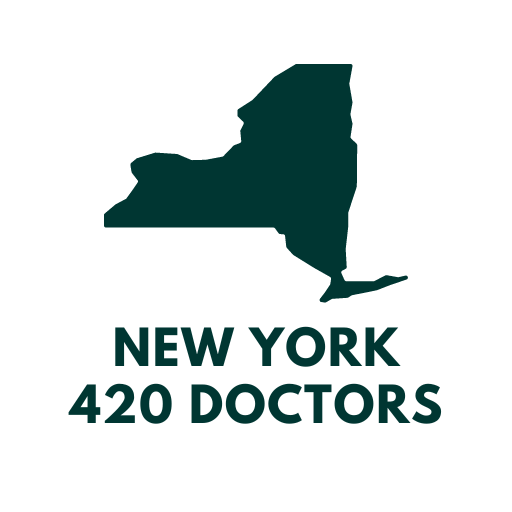The New York Medical Marijuana Program has experienced significant growth since its establishment, moving from a restrictive system to a more patient-friendly, comprehensive medical cannabis framework. This evolution has been influenced by legislative changes, growing public support for cannabis legalization, and the increased recognition of its therapeutic benefits. Over time, New York has expanded access, streamlined the certification process, and enhanced patient protections, making medical marijuana more accessible to those in need.
This article explores the key stages in the program’s development and how it has shaped access to medical cannabis in the state.
1. The Compassionate Care Act: Foundation of New York’s Program

New York’s journey into legal medical marijuana began in 2014 with the passage of the Compassionate Care Act (CCA), signed into law by Governor Andrew Cuomo. The CCA initially established one of the most restrictive medical marijuana programs in the United States. Only patients suffering from severe conditions such as cancer, HIV/AIDS, ALS, epilepsy, and Parkinson’s disease were eligible for a Medical Marijuana Card New York.
The program limited cannabis products to non-smokable forms like oils, tinctures, and capsules, prohibiting the use of whole-flower cannabis. The restrictions also extended to the number of New York Medical Marijuana Doctors authorized to issue certifications, creating barriers for patients in rural areas. As a result, many patients faced challenges in accessing treatment, and the program initially had fewer enrollees than expected.
2. Expansion of Qualifying Conditions and Telemedicine (2016-2017)

The program saw a significant shift in 2016 when New York expanded the list of qualifying conditions to include chronic pain, marking the start of a broader, more inclusive approach to medical marijuana. This addition increased the number of patients eligible for a NY Medical Marijuana Card, helping those suffering from long-term, debilitating pain who previously did not qualify under the stricter guidelines.
Another major change came in 2017 with the introduction of telemedicine, allowing patients to consult with New York Medical Marijuana Doctors online rather than attending in-person appointments. This was a significant advancement in improving accessibility for patients in rural or underserved areas, as well as for those with mobility issues. With telemedicine, patients could get certified more quickly, reducing the burden of travel and increasing enrollment.
3. The Impact of the Marijuana Regulation and Taxation Act (MRTA): 2021 Reforms

Perhaps the most transformative moment in New York’s medical marijuana history occurred in March 2021 with the passage of the Marijuana Regulation and Taxation Act (MRTA). While the law is best known for legalizing recreational marijuana for adults 21 and older, it also brought sweeping reforms to the medical marijuana program. The MRTA’s key provisions significantly enhanced patient access and product availability, making it easier for more patients to receive the care they needed.
Key Changes Under the MRTA

1. Whole-Flower Cannabis: For the first time, medical marijuana patients were allowed to purchase whole-flower cannabis, which had previously been banned. This change was a major victory for patients, as whole-flower cannabis offers more consumption options and is often more affordable than processed forms of cannabis.
2. Home Cultivation: The MRTA also allowed patients and their caregivers to grow up to six plants (three mature and three immature) for personal medical use. This provision gave patients more control over their treatment by allowing them to grow their own supply, reducing reliance on dispensaries.
3. Expansion of Qualifying Conditions: The MRTA gave New York Medical Marijuana Doctors more discretion in certifying patients. This allowed a wider range of conditions, such as anxiety, depression, and sleep disorders, to be treated with medical cannabis. This flexibility empowered doctors to consider cannabis as a treatment option for more patients.
4. Caregiver Program: The MRTA also expanded the caregiver program, allowing patients to designate up to five caregivers to assist with their medical cannabis needs. This was particularly beneficial for patients with mobility issues or severe disabilities, as it ensured that they could receive consistent access to their medication.
4. Removal of Application Fees and Other Barriers (2022-2023)

In 2022, New York took steps to further reduce barriers to entry by eliminating the $50 application fee for obtaining a Medical Marijuana Card NY. By removing this financial obstacle, the state aimed to make the medical marijuana program more accessible, particularly for low-income patients who might otherwise struggle to afford the cost of certification.
Additionally, the state has streamlined the application process, making it easier for patients to navigate the system. Patients can now apply online, with many receiving same-day certification approval through telemedicine providers, further simplifying the process.
5. Medical vs. Recreational Markets: Integration and Benefits for Patients

With the legalization of recreational marijuana under the MRTA, New York’s cannabis market is in a period of transition. However, the New York Medical Marijuana Program continues to offer distinct advantages over the recreational market, incentivizing patients to maintain their medical status.
1. Higher Possession Limits: Patients with a New York Medical Marijuana Card can legally possess up to a 60-day supply of medical cannabis, a much higher limit than what is allowed for recreational users.
2. Lower Taxes: Medical marijuana is subject to fewer taxes than recreational cannabis, which makes it more affordable for patients who rely on it for long-term treatment.
3. Access to Stronger Products: Medical marijuana dispensaries offer higher-potency products and formulations specifically designed for therapeutic use. These products are not available to recreational consumers, which means that patients with a NY Marijuana Card have access to a wider variety of options tailored to their medical needs.
6. Looking Ahead: The Future of New York’s Medical Marijuana Program

As New York continues to build its recreational marijuana market, the state is also focused on expanding and improving the medical program. Potential future developments include increasing the list of qualifying conditions and refining the role of New York Medical Marijuana Doctors to ensure that they are fully equipped to provide comprehensive care to patients.
Additionally, there is growing interest in researching the therapeutic uses of cannabis. With more studies exploring cannabis’s efficacy in treating a wider range of conditions, it is likely that New York will continue to broaden access to medical marijuana for patients who can benefit from it.
Conclusion
The evolution of New York’s medical marijuana program reflects the state’s ongoing commitment to making cannabis accessible to patients in need. From the restrictive Compassionate Care Act to the transformative changes brought about by the MRTA, the program has grown significantly. Today, with expanded access to whole-flower cannabis, the ability to grow cannabis at home, and the option of telemedicine, the New York Medical Marijuana Program is more patient-focused and accessible than ever.

